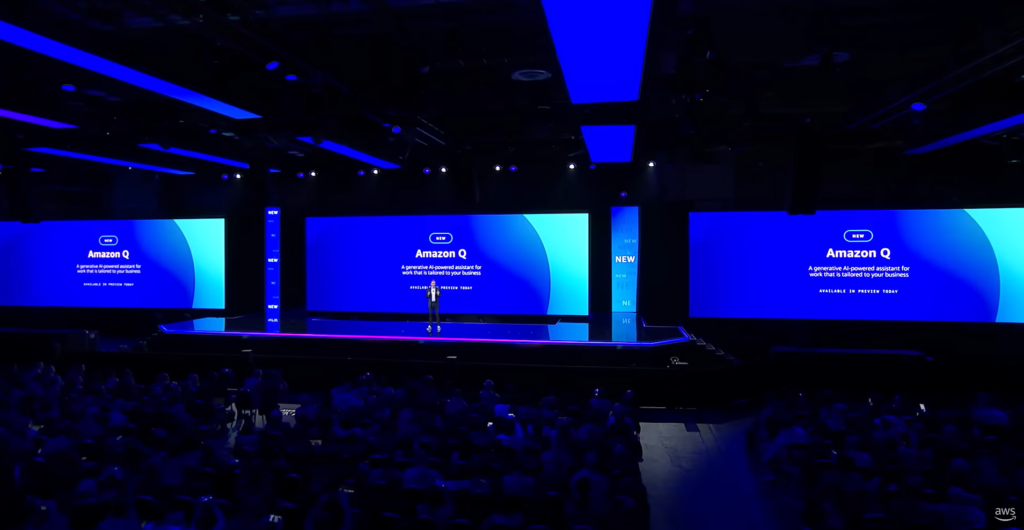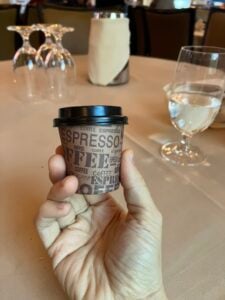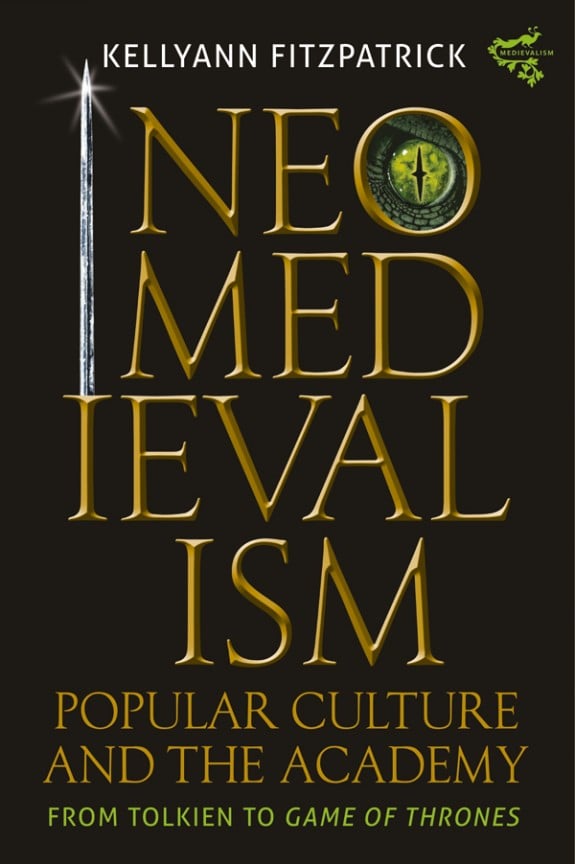
This post is a (lightly edited) transcript of an internal chat. (Note: Senior Analyst Rachel Stephens attended re:Invent 2023, but was unavailable for the chat.)
kelly (Kelly Fitzpatrick): In 2023 AWS re:Invent saw in-person attendance numbers at least feel like they were approaching its pre-pandemic high of 65k in 2019. 2023 also marks the first time since 2018 that the full roster of RedMonk analysts attended re:Invent in person.
As we have now had a solid week to process what we saw (and recover from being on planes), the purpose of the chat is to discuss our takeaways from the event.
First question: what were your general impressions of the event? And Kate, since this was your first re:Invent, let’s start with you.
kate (Kate Holterhoff): It was my first re:Invent so I had no idea what to expect beyond the dire warnings concerning the dryness of the desert air, and the need for comfy shoes to traverse the casinos.
Flying out to Las Vegas this evening for my first #reinvent ✈️
Already pooled my @redmonk fam, but any advice from seasoned #aws re:invent veterans? What should I do, avoid, bring?
— Dr. Kate Holterhoff (@KateHolterhoff) November 25, 2023
kelly: The shoes are important. I clocked 28+ walking miles just at the event and related meetings.
Which for @sogrady was like 1/10 of his usual daily walking

(from @kate and @sogrady)
kate: I was grateful for the advice! Although AWS put us up in the conference hotel (the Wynn), I managed to get in my steps handily. Walking to the Bellagio with @sogrady was the biggest haul.
kelly: Other monks: what were your initial impressions this year?
monkchips (James Governor): Ah yes – boot leather. It was, as they say in the football/soccer world, a game of two halves. AWS CEO Adam Selipsky’s keynote left me quietly surprised, and indeed impressed, that AWS had made as much progress on AI as they had – the Q story, their equivalent of Microsoft Copilots is potentially compelling and a game changer for the firm, especially as it pushes into the business application space, but then the AI/ML keynote had me concerned they were too far down in the LLM model weeds. And – it began to be clear as AWS experts played with it that for Q hallucinations are certainly a problem at launch.
AWS has been on the back foot (that’s a bit of a first, though Kubernetes did have parts of the org a little disgruntled for a while), and evidently it felt in 2023 it had no choice but for a You Only Live Once (YOLO) long ball for AI relevance. But then that’s been the case for pretty much every vendor in tech in 2023 except GitHub, Microsoft and OpenAI.
kate: In terms of the conference itself, I was happy to see AWS’s AI code assistant CodeWhisperer receive pride of place beginning with Adam Selipsky’s keynote. Dev tools aren’t always the thing CEOs want to speak about in this forum, but DevX was front-and-center.
kelly: Yes, but was that just a copy from GitHub Universe?
kate: It might have been, @kelly.
sogrady (Stephen O’Grady): I was more impressed initially on the strategy initially with the introduction of Q, but as the week wore on it became clear that AWS believes that models are going to be one of the primary methods for differentiation.
Which it may well be for buyers. But it didn’t seem to have the same appeal for developers that AWS offerings usually have.
monkchips: Oh my god next year it’s going to be just a three hour keynote listing all of the LLM models AWS supports.

(+1 from @sogrady and @kelly)
kelly: Wall of new services replaced by wall of LLMs.
monkchips: 100 per cent.
sogrady: And while CodeWhisperer did indeed get some early airtime, there’s still the issue of proximity there – as in it’s generally further distant from code inception vs Copilot, which is native to GitHub, or even ChatGPT which a bunch of developers have imprinted on.
kate: The biggest issue in my opinion had to do with the messaging around Q.
monkchips: @kate say more about the messaging issue as you see it.
kate: I was able to ask Selipsky about this at the analyst event. Specifically, in addition to asking how AWS intends to excite developers about CodeWhisperer, something that currently isn’t happening, I wanted to know more about the relationship between Q and CodeWhisperer.
The Q product is inherently unwieldy, in the sense that it encompasses several products. I don’t think anyone left re:Invent satisfied that they have a handle on Q, especially as it seems to be a moving target.
kelly: A hallucinating moving target.
sogrady: That being said, I think it’s far better for AWS to have one Q rather than a dozen or more. That would go beyond unwieldy to unmanageable.
So they have work to do, but I think the cross-brand implementation is the right path.
kate: What Selipsky told me was that the numbers for CodeWhisperer speak for themselves in terms of productivity gains, and that Q and CodeWhisperer are complementary.
monkchips: Two Qs actually Stephen. One for tech, one for Business. The latter is really interesting to me, as it pushes AWS into more direct competition with business application and productivity tools vendors – a space frankly AWS needs to have more touchpoints. It’s pretty clear ChatGPT is a productivity tool as much as anything else, and it’s hard to compete with that with a Just a Bunch Of Models.
kate: At some points it seemed like Q was an umbrella beneath which all of AWS’s AI products fell, but at others products adjacent to Q like CodeWhisperer were framed as separate, complementary products.
kelly: So I love how we jumped immediately (and unsurprisingly) into the topic of AI. But what were all of your most important non-AI takeaways?
kate: Of course, Google’s decision to buy ad space on the sphere brought some drama to the event:
Google Cloud running a Vegas Sphere ad during AWS re:invent shows two things:
1. They are hyper aggressive on cloud
2. They badly need cloud to work pic.twitter.com/GM0RNHbh8R— Aravind Srinivas (@AravSrinivas) November 27, 2023
sogrady: Well, proving that every last database on earth will be supported, there’s DB2 support now.
kelly: And a lot of “zero ETL” messaging.
sogrady: There was also a bunch of serverless news, from Aurora to Elasticache to Redshift.
Yeah, way more ETL talk than I expected.
monkchips: Well that’s kind of what I found interesting. At the preamble on day one, I really thought AWS was going to be more about sticking to the knitting, the importance of real global scale and really solid data management – under its “zero ETL” mantra. Competing with the ongoing strategic threat of Snowflake for data and information management leadership.
sogrady: And some custom silicon discussion with Inferentia and Trainium.
kelly: And Graviton 4.
I also feel like NVIDIA is everywhere these days and the re:Invent keynote stage was no exception.
monkchips: Talking of Graviton it has far lower power consumption than AMD, Intel or NVIDIA chips. One aspect I really appreciated was during AWS CTO Werner Vogel’s keynote – when he leaned into cost optimisation and being frugal – explicitly framing it as a sustainability and carbon reduction strategy. Usually AWS says things like yes we love sustainability and if customers really hassle us about it, we’ll definitely give them what we want, so persuade our customers to care, and then we will. Vogels on the other hand, put forward a position more like – “Frugality is an AWS leadership principle. It has these sustainability advantages. Get on this yo. He kept saying Sustainability is a freight train coming towards us. You have to make markets, and he was doing just that.
sogrady: Yeah, you can’t go to a conference these days without seeing Huang (NVIDIA CEO) on stage. If there’s a large conference, he’s there, because everyone wants his chips.
kate: I got so much from the face-to-face interactions. It was challenging to begin my tenure at RedMonk during the pandemic, since I’ve been forced to interact with many of our clients and AR contacts through the Brady Bunch boxes of Zoom meetings. Speaking with folks IRL at re:Invent was really exciting.
sogrady: The face to face time was huge. Cavernous as the venues were, you can’t go ten feet without running into someone you know.

(+1 from @kate and @kelly)
kate: I had some really interesting conversations with folks about how AWS is thinking about the frontend. Historically, the FE has not been a priority at AWS, but in recent years they have made significant investment in this part of the stack.
kelly: FE in the house! tell us more @kate.
monkchips: @kate yes please!
kate: For one thing, considering the contentious place of TS in the community recently I was struck by the decision to move Amplify to Typescript. I’m thinking specifically of the decision at DHH’s basecamp to remove typescript. The FE framework Svelte also ripped out typescript this year.
kelly: I am interested to see where Typescript lands in the next edition of our programming language rankings.
So stepping back from announcements, a more general question about the show itself: what did AWS do right and wrong at the show?
I was super impressed by the number of people there. My attempts to get to the expo were all thwarted by walls of people. And also the fact that I was 100% overscheduled.
sogrady: It remains the single most important event in the industry, a center of gravity like no other.
I wish it weren’t the week after Thanksgiving, I wish it wasn’t in Las Vegas, but it’s a must attend event.
monkchips: Hashicorp had the best bar for chilling out away from the madding crowds.
kelly: FLAMING SKULLS

monkchips: so good.
kate: OMG, the Hashicorp bar scene was the BEST.

(+1 from @sogrady)
Although, breakfast with VMware was also v. tasty. And they put my espresso in a teeny tiny cup!
kate:

kelly: This year AWS also set up a Rec Center at Mandalay Bay to showcase how their tech is incorporated into various sports-centered technologies. For me this was a really nice break from the usual wall of meetings and talks.
monkchips: The Day One keynote was excellent to be fair. Definitely Selipsky’s most comfortable and confident so far. Day Two as we all agree was too much a list of models to really land. Day Three I also enjoyed. We all need to architect for frugality now interest rates are no longer zero.
kelly: It was also refreshing to hear someone talk about something other than AI.
So thank you, Werner.
monkchips: My son was very happy with the hoodie, but my wife might have been a bit surprised if I returned with a tattoo. Baby goat petting makes sense to me at a tech conference. Tattoos and piercings not so much.
sogrady: I honestly thought they were kidding about the tattoos and piercings.
monkchips:
If you were going to get a tattoo of any technical concept, encoding, piece of code, whatever – what would it be?
Do something better than this. pic.twitter.com/IlWYHoABl1
— Randall "we build cool stuff" Hunt (@jrhunt) October 10, 2019
sogrady: Turns out, not so much.

(from @kate)
kelly: I bet we see tattoo booths pop up at other tech conferences.
Speaking of the competition, what did the show mean for AWS competitors?
monkchips: I am pretty sure Google Cloud just sat there quietly content, knowing it was dropping Gemini, its own model, the following week. Folks are seemingly very excited about its multimodal capabilities.

(+1 from @sogrady)
sogrady: Microsoft and AI are probably encouraged for the moment; Q has a ways to go, and I’m skeptical of the “compete with elite closed models with a choice of lots of models” approach.
But it’s still very early days, and AWS has spun up and no one iterates faster.
kate: I got a lot from Adam Seligman’s keynote. He had some excellent presenters (Ali Spittel, Brooke Jamieson, etc.):
kelly: I love the concept of next gen DevX.
monkchips: Next gen for AWS, or next gen for the industry. Vercel and Supabase for example are already next gen DevX.
kelly: I want that concept to drive what every software vendor does, b/c in an age of genAI, DevX is going to be in a constant state of change.
monkchips: Although to your point Kelly maybe AI saturated DevX is next next gen?
kelly: post next gen DevX
But the name itself invokes a constant state of re:invention, if you will, and I think when we are talking DevX, that is a good reminder that it’s not about just checking some boxes.
OK, final question: in terms of looking to the future, a year from now, what will be the announcement from this re:Invent that we look back and recognize as the most important (assuming that none of us got tattoos)?
monkchips: I think it’s about Q, for all the teething problems. It’s the YOLO era of AI, and AWS had to get in the game. What would be the alternative? Wait for a thoroughgoing launch until 2024?
I am less worried about hallucinations than security concerns, such as those highlighted by Simon Willison about the dangers of prompt injection when you’re building new AI apps that touch existing services.
sogrady: Q for me, pretty easily. Whether it’s successful or not.
monkchips: Actually of course, as Stephen mentioned earlier – RDS for DB2. That’s the real difference maker.

(from @sogrady)
For a lot of Java shops the Java migration tools (which really didn’t need to be under the Q banner) have to be exciting. The Open Rewrite project could be a game changer.
kelly: I am interested to see what we think of the Bedrock mulitmodel approach a year from now. It is a contrast to what we are seeing from other cloud vendors.
monkchips: Or maybe PartyRock, which we haven’t even mentioned. It’s a fun, useable front end built on the AWS Bedrock API for model integration. It looks like it could be a viral success, and end up being a lot more important than what the darned models are! If it was me I would have messed around with PartyRock for like 30 minutes in the keynote, then said – Now you.
kelly: @kate and I actually did get the chance to mess around with PartyRock; it definitely appeals to the tinkering spirit.
monkchips: Play wins. As @kate often says: AI is for the tinkerers.
kate: Yeah, PartyRock has potential. Also looking forward to trying out Titan. I have been disappointed with Dall-E lately and would love a better alternative
kelly: On my end, a year from now I may still be recovering from RM beers. You gotta love Atomic Liquors.
kate: lol
monkchips: Well, sure. I think that AWS had a decent show, the Selipsky era has now begun in earnest, and we’ll find out if he’s the wartime leader AWS needs. As Rachel said, very smartly, this week, Satya Nadella at Microsoft is a wartime leader that doesn’t look like a wartime leader. That’s the key competition, and that’s what Adam Selipsky is going to have to be too.
kelly: And with that piece of advice, that’s a wrap! Thank you all for your time today.
Disclosure: AWS is a RedMonk client, but this is an independent and unsponsored piece of research. GitHub, Google Cloud, Hashicorp, Microsoft, and VMware by Broadcom are also RedMonk clients.
Related posts

No Comments